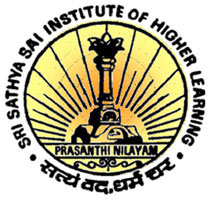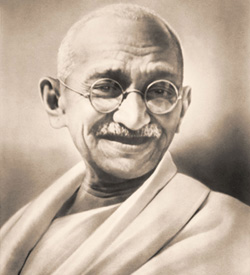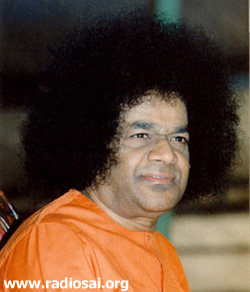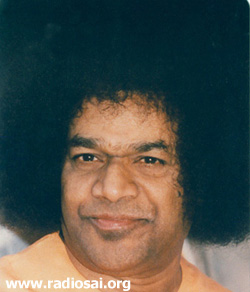 |
 |
 |
 |
| Volume
4 - Issue 03 MARCH 2006 |
|
|
4 M's - MAN, MONEY, MYTH AND MORALITY Introduction My central point was that when man goes avidly in quest of wealth, he quickly loses discrimination and begins to swallow all kinds of myths. This results in man abandoning scruples, if not wholly, at least in substantial measure, and in turn that leads to disaster. In other words, my pitch was that nobody, economists included, can afford to ignore Morality in the larger scheme of things. Some Examples Of How Science Has Influenced Technology Modern business, trade and commerce are all heavily dependent on Science and Technology. The linkage between these is elaborate and somewhat tenuous; so let us begin by trying to understand this connection, at least in outline. At one end, we have what is usually called basic research. Here, driven by intellectual curiosity, scientists explore and investigate various aspects of Nature purely for the sake of Knowledge – there is no ulterior motive, except maybe to achieve fame. Even that is secondary; the starting point is an irresistible and inner urge to know. However, not infrequently, discoveries made in this fashion make a huge impact on mankind. Let me illustrate with three examples. At the time Maxwell discovered the equations now named after him, no one could imagine what an impact they would have on mankind. However, they have made an extraordinary impact, and it is to Maxwell’s equations that we owe electric generators, motors, the telegraph, the telephone, radio, TV and what have you. However, in spite of this and other similar examples, until about the middle of the twentieth century, few understood the impact Science could have on Technology. On the contrary, Science was regarded as the pursuit of dreamers. But intelligent facilitators and inventors like Edison and Alexander Graham Bell, for example, clearly saw how Science could be harnessed for practical advantage. The story is told of one English scientist who demonstrated one of his discoveries to the British PM [I believe it was Gladstone]. The latter is supposed to have then asked, “Of what use is this discovery?” Pat came the reply, “Sir, one day you would be able to tax this!” In a way, that story summarises a large part of the connection between Science and Society. EXAMPLE 2: Let me now move on to my second example. In the early thirties of the twentieth century, physicists began to apply the newly-discovered quantum mechanics to the theory of solids. This work got interrupted during the Second World War. After the War, three American scientists, Shockley, Bardeen and Brittain working in the famous Bell Labs were studying the current carrying capabilities of germanium, and in the process developed a device called the transistor.
The Post-War Gold Rush
Overnight, scientists lost their innocence and became putty in the hands of those who had money to throw. As a well-known physicist named Freeman Dyson once lamented, “We sold our souls to the devil!” The most spectacular example of this was seen in America in the post-war era where, dazzled by the power of the atom bomb, the Atomic Energy Commission, the Defence Department, the Army, the Navy, the Air Force and the Marine Corps independently began to literally flood scientists with fabulous research grants. In fact, these agencies were competing with each other in enticing scientists to work for them. Scientists could work on anything they loved to, and thanks to the Cold War, they could also get all the money they wanted. As if this was not enough, the Space Race brought in even more money. It was like a gold rush, and attracted by it thousands from everywhere flocked to America, including from India. Research Today and its Relationship to the Corporate World However, they invest almost entirely on focussed research, research that would fetch returns for the shareholders. This has dramatically altered in substantial measure the complexion and even the culture of Science, so much so that many of the findings of basic research are now getting patented, especially in the field of molecular biology, something unthinkable fifty years ago. Somewhere around the early nineteen hundreds, when Sir. J.C.Bose founded the Bose Institute in Calcutta he proudly declared that the discoveries made there would be shared freely with the rest of mankind. Today, not many would talk like that; if a discovery can be patented, it sure would be. In fact, in America, Universities insist on patenting discoveries with potential commercial fallout, even if the scientists who made the discoveries are not keen on it. The rule seems to be: if you can make a fast buck, don’t wait! So much for a thumbnail portrait of the way in which Science affects Society. In brief, during the last two centuries, we have witnessed the following:
And now, we are entering the era when bio-science is fast taking the centre stage. Mass Production and its Impact After this broad-brush view, I must next draw your attention to some important cultural aspects of the impact Science and Technology have had on Society. The automobile provides the classic example. The motor car was invented in Europe towards the end of the nineteenth century. Several versions were developed at that time, and entrepreneurs built a few hundred copies of each model. It was basically a curio for the rich. Many in America followed suit, one of them being Henry Ford. Ford was not an inventor, but a businessman out to make money. He built garages, hired mechanics and machinists and turned out cars in hundreds. He was not satisfied; instead, he wanted to make cars in hundreds of thousands and to bring the price down so that the average American could easily buy one. With typical American genius, he invented an entirely new concept that had nothing to do with Science or Technology. It was more a case of daring innovation, driven entirely by the desire to make a lot of money. Ford realised that quantity comes only from mass production; thus it was that he invented the assembly This revolution had a tremendous impact across the board. First, there was a wave of immigrants who came to America seeking jobs, which now were available in tens of thousands. Next, assembly-line production meant one did not have to be a specialist. Instead, one had to do just one kind of job all the time but properly. This meant less training, less skills, etc. It also meant lower salaries. Further, more cars meant ancillaries, more jobs and more wealth generation. There was also the boom for the oil industry, highway construction, hotels, motels, tourism etc. Truly, Ford changed the American way of life. However, Ford soon met with stiff competition, curiously in his own backyard. Competitor General Motors argued: “It is meaningless to produce the same model year after year. Why don’t we introduce styling and keep changing models every year, enticing people to buy new models all the time?” Thus was born the concept of planned obsolescence, which has now become a fine art. The story does not end here because after the Second World War, in far away Japan which was struggling to rise from the ruins, the man who headed a small company called Toyota asked: “How do I reduce costs further and make the car more appealing?” And he came up with wonderful innovations of his own. He said: “Cost can be reduced by using robots and tight inventory control [the just-in-time approach]. Next, let me make reliability a corner stone. People would definitely like reliability. And why make only huge cars? Why not smaller cars too?” The Americans laughed but everyone knows what happened in the end, especially after the first oil crisis in the early seventies. I am mentioning all this to drive home the point that the entry of mass production was a major revolution in innovation. It was soon realised that this technique could be applied across the board to all kinds of manufacture, from the apparel industry to the meat industry. Industrialists now realised that mass production alone was not enough. There is no use in making things in quantity if there are no buyers. The masses had to be constantly enticed into buying all sorts of things, including things they really did not need; and that is how marketing became an art of its own. Today, simple marketing has graduated into something much more sophisticated but that we shall consider a little later. The Role of Synergy Later, Motorola developed much smaller units that police and security people began to use extensively. However, these were meant mainly for short-range and point to point communication. The man who invented the cell phone linked all this to the regular telephone exchange, taking advantage of the miniaturisation now possible. Once the cell phone was invented, there was a stream of add-ons, so much so one can now even take a digital picture with a cell phone and send it to someone else in some other part of the world. This is how synergy works in modern industry. There are any number of such examples. What I am trying to drive at is that new needs are constantly being created in a clever manner to promote more and more consumption and thereby not only expand but also create new markets. The net result of all this is that the entire sociology of production, distribution, etc., is constantly undergoing changes. All of this is not only affecting the entire financial system but even the way people think and work, as dramatically illustrated by the internet. This precisely is where mass opinion-moulding enters the picture. The Dynamics of Wealth Distribution Thus far, I have essentially talked about man, mass production and money, that is to say, about wealth generation, or to express it in terms of the title of this article, about man and money. Generation is one thing and distribution is another, and the latter is governed by the various socio-economic forces. For example, water comes down from the sky as rain. What happens subsequently to that water depends very much on the nature of the terrain. In some cases, the water collects locally while in other cases it flows away to other parts. The forces that govern wealth distribution are entirely man-made and this precisely is where manipulation comes into the picture. What is normally called creating a market is basically achieved by manipulating opinion, the opinion not only of the potential buyer [as it once used to be] but these days also of Governments, world bodies and Society at large. Thus, opinion moulding goes far beyond good old advertising. For example, where transport is concerned, what India badly needs are a) good roads, and b) a good public transportation system. Instead, the automobile has made its appearance in a big way. Rather than solving the problem, it has in fact made the situation worse, with traffic jams, unwanted accidents and of course pollution. I won’t go into all this in detail but it should be obvious that mass production is closely coupled to the mass manipulation of public opinion through heavy advertising. This is where myth enters the picture. The advertisement industry attracts the best of creative talent, and, by skilfully capitalising on the human weakness for desire, delivers buyers in millions to the Industry. It used to be said by the Nazis that if a lie is repeated often enough, it becomes truth! Western pundits often used to quote this line to decry Nazi propaganda but in the post-war world, that precisely is what the ad industry is doing in a big way, much to the detriment of Society and humanity. In short, the ad industry is essentially a myth-generation industry! Nor will the Media ever accept any control by anybody. It claims it knows its business, it knows how to police itself, that people have a right to know, that they are answerable to the people and people alone, etc. So cleverly has the Media manipulated all sections of Society that it has become holier than the proverbial Sacred Cow. Commenting on the recent tussle about privileges between the Legislature and the Courts, Justice V.R.Krishna Iyer, formerly of the Supreme Court of India writes, “We must not forget the words of Coolidge J. in Stockdale v/s Hansard that ‘it is in the very nature of irresponsible power, particularly in the hands of a large body, to run into excess.’” The Media is not a large body but unquestionably a very powerful one, in all Societies. Especially in rich and powerful countries, it has an understanding of sorts with the Establishment. Using its tremendous clout, the Media manipulates opinion and does heavy brain-washing, pretending all the time to be free and fair. The Media has become extremely self-serving, and most unfortunately, also rather irresponsible. In short, it is one of the prime engines of myth generation and opinion manipulation, working in unholy alliance with money power and the ad industry. Escaping from Myth to Morality Let me now come to my main point. I would like to begin first with a few observations made recently by Prof. Indiresan. Professor Indiresan is an electrical engineer by training and served for a while as the Director of the prestigious Indian Institute of Technology in Madras/Chennai. An intellectual of the highest order, these days he often comments on the Indian scene. Writing recently after an important decision by the Supreme Court of India, Prof Indiresan said:
The eclipse of moral authority in public affairs and the incompleteness of what is often referred to as the rule of law are highlighted by remarks made by a leading newspaper in India, after the Supreme Court was forced to acquit a person on legal grounds. The Court added that while the defendant might have escaped the clutches of the law, the person concerned was answerable to his Conscience. Commenting on all this, the newspaper I mentioned earlier wrote that it was a case of “comprehensive legal acquittal in the main combined with emphatic moral disapproval…” The paper added: “The Supreme Court finds that the Code of Conduct does not have statutory force, cannot be enforced in a Court of Law, and cannot be construed as imposing a legal prohibition….” These remarks pinpoint the fundamental crisis of modern times. Gandhi often used to say, as indeed we have believed in this country for thousands of years, that there is a Moral Law governing the Universe. And now, the highest Court of the India, which Swami hails as Dharma Bhoomi or the Land of Dharma, says that Moral Law is between a person and his or her Conscience, having little to do with the Law of the land. So the basic question is: “Which is superior? Moral Law or Law passed by Legislatures, International Bodies that are in collusion with global commercial interests, and so on?” Driven by greed and the unprincipled quest for money, man has started swallowing huge myths and has created laws that would enable him to wriggle out of Morality. As the French philosopher Jacques Saurin observes, these days “law often permits what honour forbids.” Honour places a premium on duty and responsibilities. Today, however, as Swami often remarks, it is almost invariably rights first and duties later, if at all. The point that I am trying to make is far from academic. Nor is it very original. Intelligent people the world over know all about what I am saying, and maybe much more; yet, few are crying foul. That really is my point. I maintain that this is the time for intellectuals to speak out and speak out boldly. To remain silent knowing fully well what is happening would be as inexcusable as Bhishma’s silence was during the public humiliation of Draupadhi. Indeed, I believe that is one of the cardinal lessons taught to us by the Mahabharatha, namely that intellectuals must be the Conscience-keepers of Society and NOT shut their mouth when there is a Moral crisis.
Raanan Weitz says, “Humanity shares one planet but on this planet there are two worlds, the world of the rich and the world of the poor.” Let us not delude ourselves into the belief that these two worlds can co-exist peacefully. As Alan Greenspan, former Chairman of the Federal Reserve Board in America once remarked, “One cannot have an island of prosperity in the midst of a vast ocean of poverty.” A Cardinal from Honduras puts it more pungently – I heard him in an interview broadcast by the BBC. This Cardinal says that three most dangerous weapons of mass destruction are: poverty, corruption and grave social injustice. Are we so blind that we cannot pin-point what produces these weapons? Where does the problem lie? Swami gives us a clear answer. In earlier years, Bhagavan Baba often used to come to the College to give private discourses to students, especially at the Business School. Speaking on one such occasion many years ago, He said:
As Swami often reminds us, the ancients in India strictly followed a four-point code of conduct. This rule, termed the Purushaarathas, was distilled into four words: Dharma, Arthaa, Kama and Moksha, that is, righteousness, quest for wealth, desires and the yearning for Liberation. The ancients of India declared: “Man can aspire for wealth and have some desires; however, these must be bounded by righteousness on the one hand and a yearning for God on the other, that is to say, Dharma and Moksha.” If man lives within these bounds, then the life of the individual would be balanced and harmonious. If the individual strictly adheres to Moral Principles, then Morality would automatically prevail in Society. And when that happens, one would have Rama Rajya, the Indian phrase for Utopia. Swami puts it all neatly and crisply. He says we must first have Love for God followed by a fear of sin. If these two are present, then Morality in Society would automatically follow. If there is Morality in Society, most of our present problems would vanish. Mankind has thus far tried every possible kind of economic and political ism all of which have ultimately failed, because in every single case, greed swallowed the proponents of the particular creed espoused. What we need is not any new ism or any new economic order but a return to basic human values that Swami constantly advocates. Money and myths such as the magic of the market place, will not work in the long run; Morality alone will. That is the way I feel; do you agree? Please do write and let us know. As always, we can be reached at: <h2h@radiosai.org> Thank you and Jai Sai ram. - Heart2Heart Team. |
| You can write to us at : h2h@radiosai.org |
Vol 4 Issue 03 - March 2006
|
Best viewed in Internet Explorer - 1024 x 768 resolution. |
DHTML Menu by Milonic. |
 This article is an extensive adaptation of a talk I gave in 2004 at a Conference of Economists, organised by the Economics Department of Swami’s Institute. I am not an economist but since much of modern trade and commerce depends heavily on Science, I being a scientist was asked to air my thoughts on matters related to economics. It is not often that I find myself facing such a specialist audience and so I decided to provoke the pundits of economics with some unconventional ideas using Science and Technology as a mere excuse; and this talk was the result.
This article is an extensive adaptation of a talk I gave in 2004 at a Conference of Economists, organised by the Economics Department of Swami’s Institute. I am not an economist but since much of modern trade and commerce depends heavily on Science, I being a scientist was asked to air my thoughts on matters related to economics. It is not often that I find myself facing such a specialist audience and so I decided to provoke the pundits of economics with some unconventional ideas using Science and Technology as a mere excuse; and this talk was the result.  EXAMPLE 1:
EXAMPLE 1:

 The dream days of the Cold War era have disappeared and lately, money for basic research is becoming quite scarce. However, big money continues to be invested in certain areas of applied research. There are other important differences. Earlier, research was almost entirely government funded, even in America, but now some of the big companies have got into the act.
The dream days of the Cold War era have disappeared and lately, money for basic research is becoming quite scarce. However, big money continues to be invested in certain areas of applied research. There are other important differences. Earlier, research was almost entirely government funded, even in America, but now some of the big companies have got into the act. line, which overnight dramatically changed the auto industry. When millions instead of hundreds of cars were built, the cost naturally came down and the auto revolution was ushered in.
line, which overnight dramatically changed the auto industry. When millions instead of hundreds of cars were built, the cost naturally came down and the auto revolution was ushered in.  A few quick words now about a new trend called synergy, wherein one brings together many skills already available to create a new product. In the old days, technological revolutions were ushered in by new inventions – that is how Edison, Graham Bell, and so on set in motion new waves. These days it is innovation rather than fresh invention that leads to many quantum jumps. The cell phone is a very good example. It was the result of a question one man asked. The question was: “How about linking the telephone with the wireless?” Actually, this was not at all a new concept because wireless phones were already in use during Second World War; they were called walkie-talkies.
A few quick words now about a new trend called synergy, wherein one brings together many skills already available to create a new product. In the old days, technological revolutions were ushered in by new inventions – that is how Edison, Graham Bell, and so on set in motion new waves. These days it is innovation rather than fresh invention that leads to many quantum jumps. The cell phone is a very good example. It was the result of a question one man asked. The question was: “How about linking the telephone with the wireless?” Actually, this was not at all a new concept because wireless phones were already in use during Second World War; they were called walkie-talkies.  A special word now about the Media, since that is the prime vehicle for advertisers. Originally, this so-called Fourth Estate represented only the print media or the Press as it is generally referred to but now it not only covers the written word but also the radio, TV, internet and so on. Practically every Constitution in the world provides some kind of checks and balances to the agencies associated with governance and the rule of law. But where the Media is concerned, it does not.
A special word now about the Media, since that is the prime vehicle for advertisers. Originally, this so-called Fourth Estate represented only the print media or the Press as it is generally referred to but now it not only covers the written word but also the radio, TV, internet and so on. Practically every Constitution in the world provides some kind of checks and balances to the agencies associated with governance and the rule of law. But where the Media is concerned, it does not. What was my point in offering the above quote? Simply this: earlier, we surrendered power to the State so that we may be governed. But now, through clever generation of myths, we are asked to surrender power to a conglomerate of vested interests, which together form the Super State of global commercial interests. As the American savant William Appleman Williams once wrote, modern day commercial interests want “the rewards of an empire without paying the costs of empire and without admitting that it was an empire”.
What was my point in offering the above quote? Simply this: earlier, we surrendered power to the State so that we may be governed. But now, through clever generation of myths, we are asked to surrender power to a conglomerate of vested interests, which together form the Super State of global commercial interests. As the American savant William Appleman Williams once wrote, modern day commercial interests want “the rewards of an empire without paying the costs of empire and without admitting that it was an empire”. Swami says that there cannot be a mound without a pit. Yes, if some are very rich, it is because some others have been ruthlessly exploited and mercilessly driven to extreme poverty. Many may contest this and argue that the software industry, for example, cannot be accused of generating poverty. Yes, locally there might appear to be no connection between the amassing of wealth and the growth in poverty. However, at the macro level, wealth generation is never altruistic and invariably involves exploitations of various kinds, some very evident and others not so evident and happening via an invisible chain. All this being done by the so-called market forces that, in collusion with mass media, have perfected the art of mass deception through mass myth generation, that is, by saying that greed is good, that being rich is great, that market forces are good for Society and must therefore have their play even if some are forced to starve, and so on.
Swami says that there cannot be a mound without a pit. Yes, if some are very rich, it is because some others have been ruthlessly exploited and mercilessly driven to extreme poverty. Many may contest this and argue that the software industry, for example, cannot be accused of generating poverty. Yes, locally there might appear to be no connection between the amassing of wealth and the growth in poverty. However, at the macro level, wealth generation is never altruistic and invariably involves exploitations of various kinds, some very evident and others not so evident and happening via an invisible chain. All this being done by the so-called market forces that, in collusion with mass media, have perfected the art of mass deception through mass myth generation, that is, by saying that greed is good, that being rich is great, that market forces are good for Society and must therefore have their play even if some are forced to starve, and so on.  Given today’s somewhat dismal situation, you might wonder whether all is lost and that there is no hope. Not at all; there is hope for sure because there is something greater than gold and gun put together; and that something is God. We just have to return to the moral path in individual and national life. That and that alone is the way to realise Rama Rajya, as Gandhi clearly saw a long time ago.
Given today’s somewhat dismal situation, you might wonder whether all is lost and that there is no hope. Not at all; there is hope for sure because there is something greater than gold and gun put together; and that something is God. We just have to return to the moral path in individual and national life. That and that alone is the way to realise Rama Rajya, as Gandhi clearly saw a long time ago.